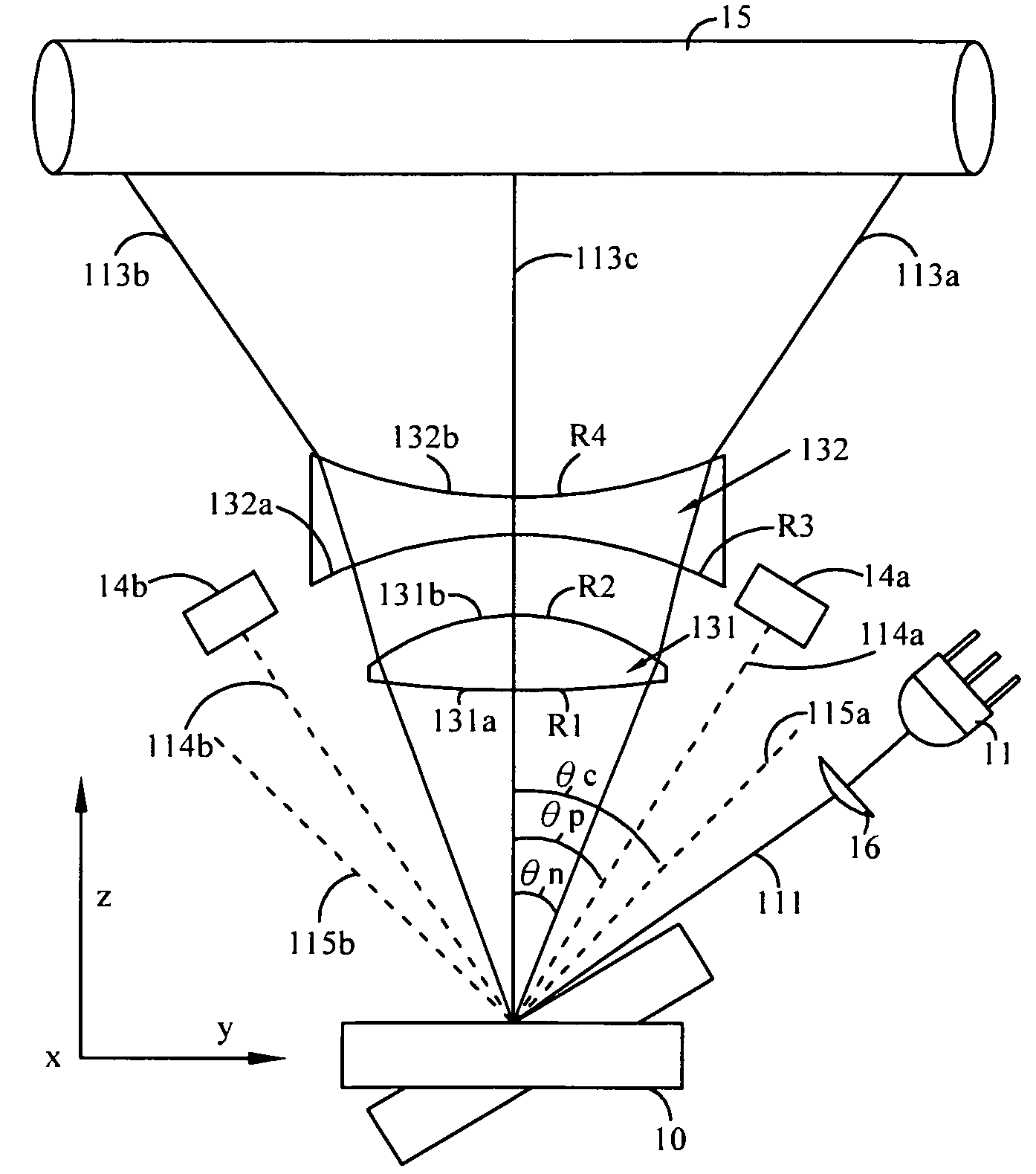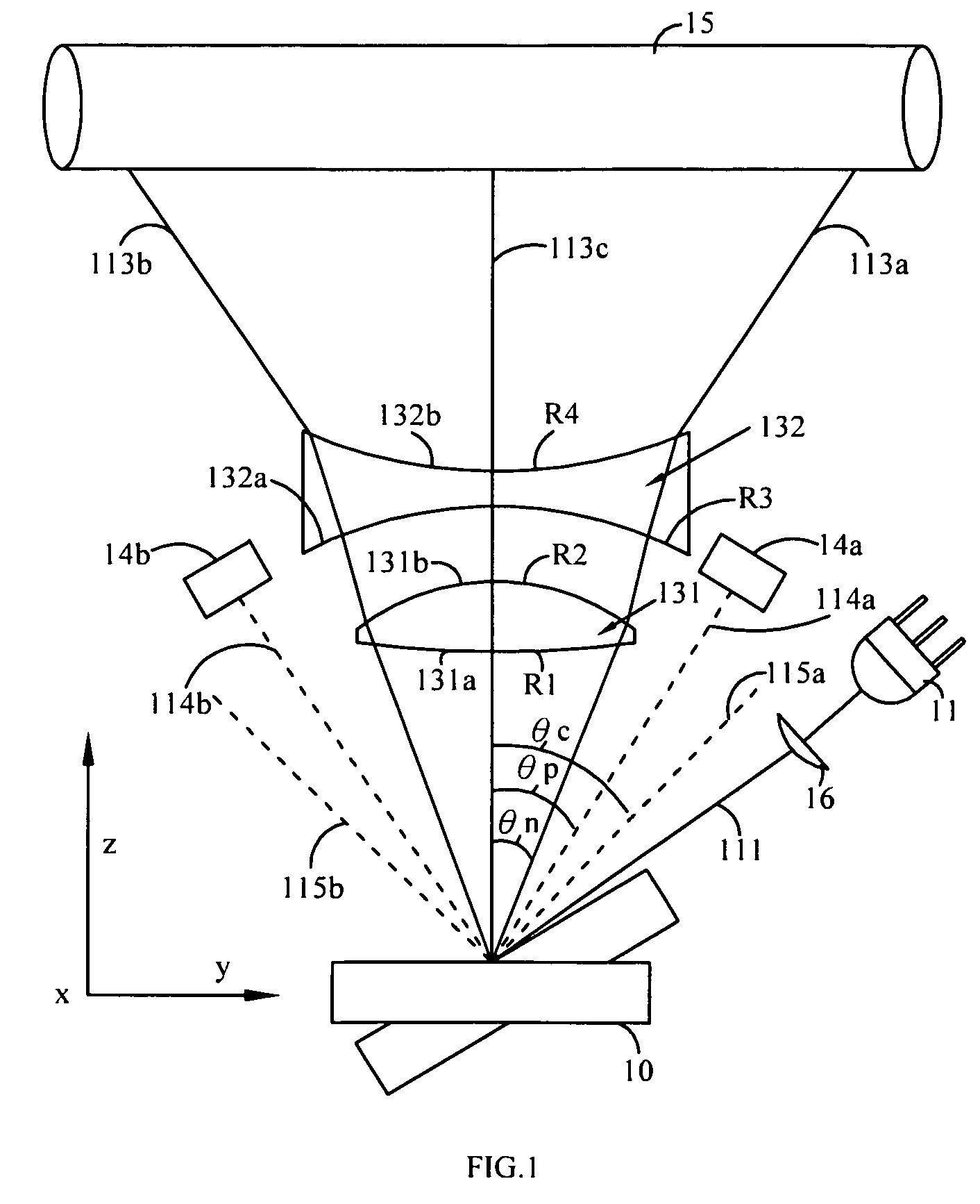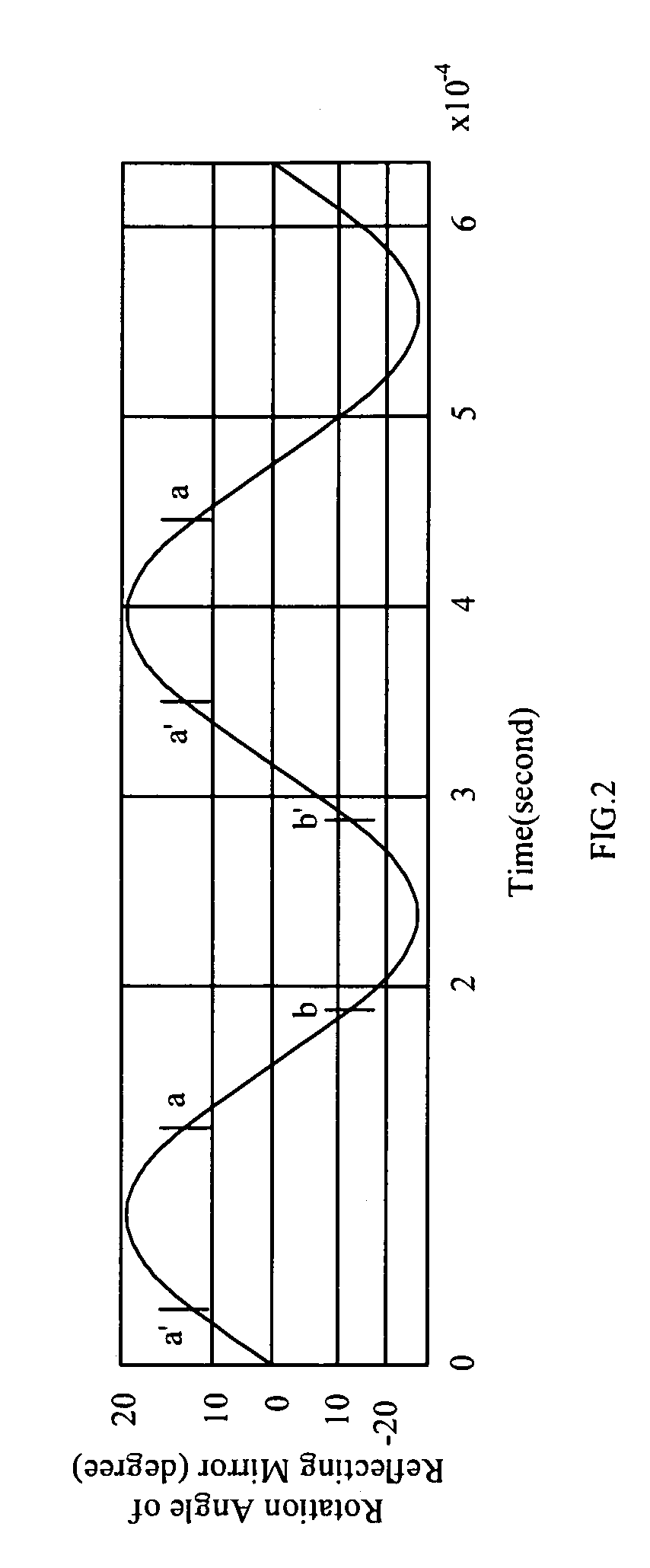Two-element f-theta lens used for micro-electro mechanical system (MEMS) laser scanning unit
a technology of laser scanning unit and micro-electro mechanical system, which is applied in the field of two-element f lenses, can solve the problems of increasing the number of components, increasing the manufacturing cost of lsu, and high difficulty of rotating polygon mirrors
- Summary
- Abstract
- Description
- Claims
- Application Information
AI Technical Summary
Benefits of technology
Problems solved by technology
Method used
Image
Examples
Embodiment Construction
[0029]Referring to FIG. 1 for a schematic view of optical paths of a two-element fθ lens used for micro-electro mechanical system (MEMS) laser scanning unit in accordance with the present invention, the two-element fθ lens used for the micro-electro mechanical system (MEMS) laser scanning unit 13 comprises: a first lens 131 having a first optical surface 131a and a second optical surface 131b, and a second lens 132 having a third optical surface 132a and a fourth optical surface 132b. In FIG. 1, the MEMS laser scanning unit comprises a laser source 11, a MEMS reflecting mirror 10, a cylindrical lens 16, two photoelectric sensors 14a, 14b, and a light sensing target. In FIG. 1, the target is implemented by a drum 15. After a beam 111 produced by the light laser source 11 is passed through a cylindrical lens 16, the beam 111 is projected onto the MEMS reflecting mirror 10. The MEMS reflecting mirror 10 generates a resonant oscillation to reflect the beam 111 into scan lights 113a, 113...
PUM
 Login to View More
Login to View More Abstract
Description
Claims
Application Information
 Login to View More
Login to View More - R&D
- Intellectual Property
- Life Sciences
- Materials
- Tech Scout
- Unparalleled Data Quality
- Higher Quality Content
- 60% Fewer Hallucinations
Browse by: Latest US Patents, China's latest patents, Technical Efficacy Thesaurus, Application Domain, Technology Topic, Popular Technical Reports.
© 2025 PatSnap. All rights reserved.Legal|Privacy policy|Modern Slavery Act Transparency Statement|Sitemap|About US| Contact US: help@patsnap.com



